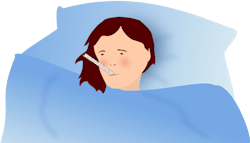Repeated exposure to influenza viruses may undermine the effectiveness of the annual flu vaccine. A team of researchers led by Washington University School of Medicine in St. Louis (WUSTL) has developed an approach to assess whether a vaccine activates the kind of immune cells needed for long-lasting immunity against new influenza strains. The findings could aid efforts to design an improved flu vaccine, according to a press release on WUSTL’s website.
A growing body of evidence suggests that a history of exposure to influenza virus might be undermining the effectiveness of the annual flu vaccine. Partial immunity developed during prior flu seasons — either through natural infection or vaccination — might interfere with the body’s response to a new vaccine, such that vaccination mainly boosts the recognition of prior influenza strains but does little to create the ability to fight new strains.
Now, a team led by researchers at Washington University School of Medicine in St. Louis has developed an approach to assess whether a vaccine activates the kind of immune cells needed for long-lasting immunity against new influenza strains. Using this technique, the researchers showed that the flu vaccine is capable of eliciting antibodies that protect against a broad range of flu viruses, at least in some people. The findings, published the journal Nature, could aid efforts to design an improved flu vaccine that provides protection not only against old influenza viruses but also new ones.
“Every year, about half of the U.S. adult population gets vaccinated against influenza,” said senior author Ali Ellebedy, PhD, an assistant professor of pathology and immunology at Washington University. “It’s necessary for public health, but it’s also incredibly expensive and inefficient. What we need is a one-and-done influenza shot, but we are not there yet. Anything that helps us understand how immunity develops in the context of prior exposures would be important as we try to make a better vaccine.”

